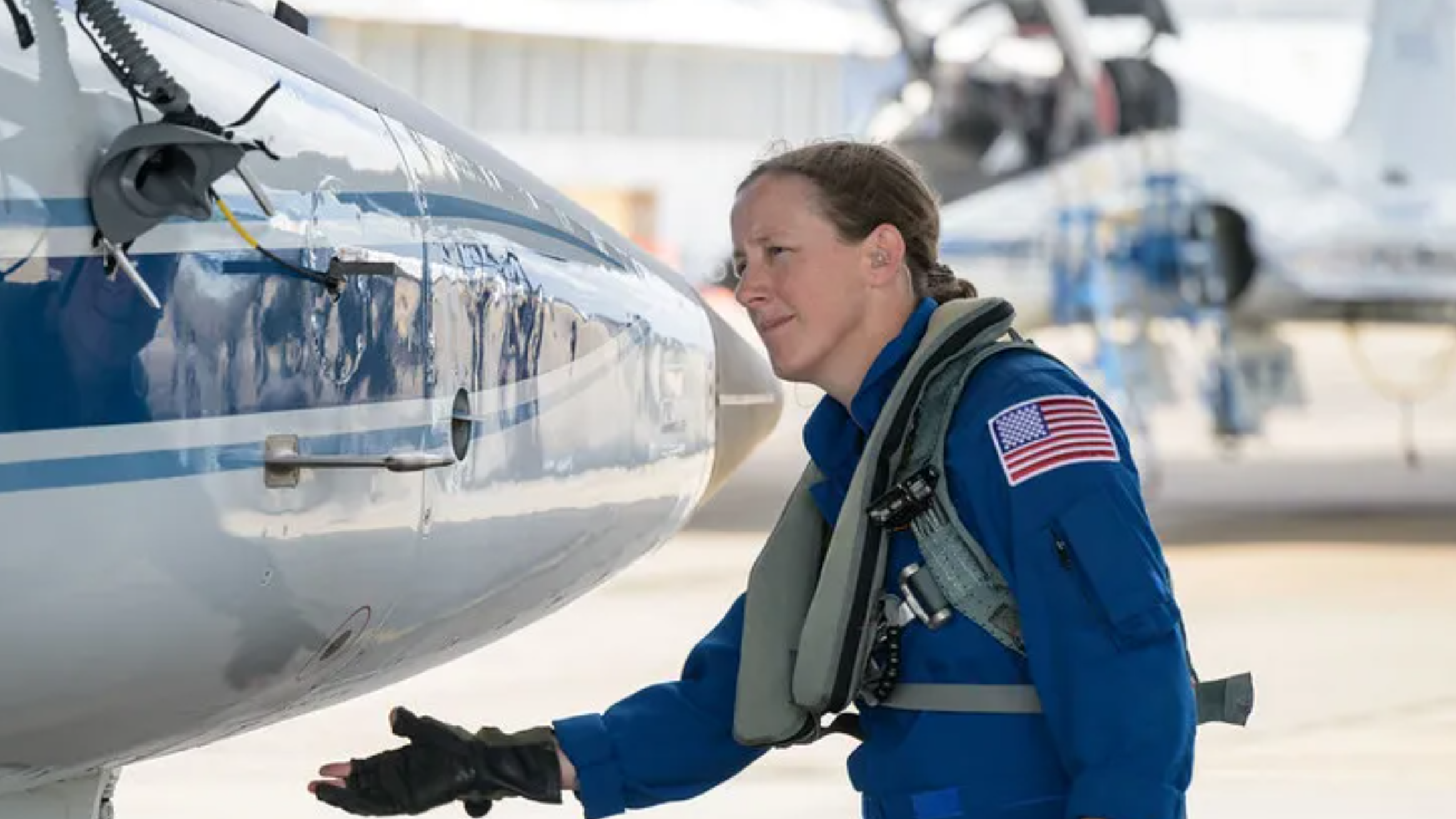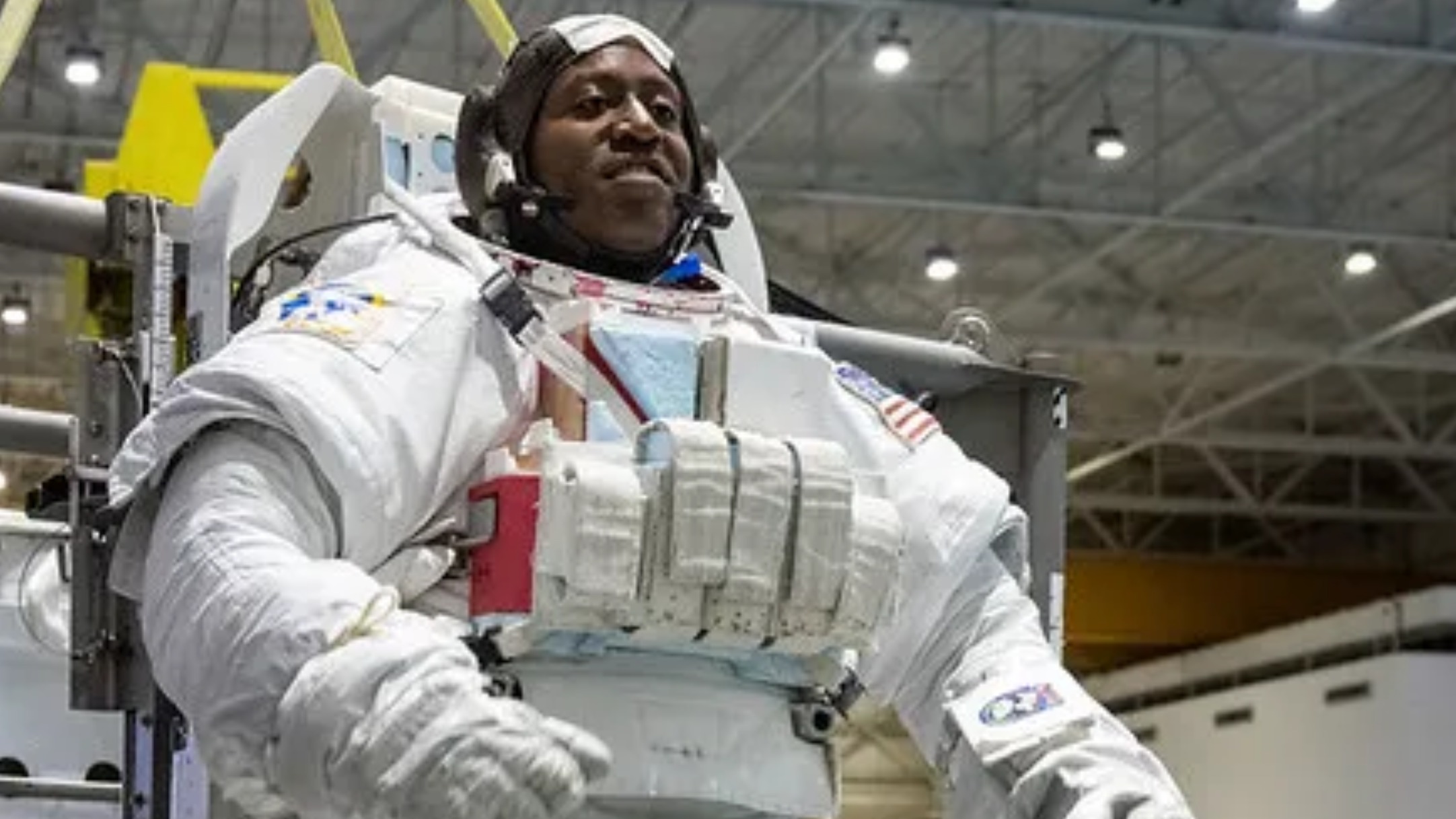New NASA astronauts celebrate moon missions, private space stations as they get ready for liftoff (exclusive)
"We're going to take the things we've seen in Hollywood and try to make that a reality."

A nervous Jack Hathaway had one last obstacle to overcome before becoming a NASA astronaut candidate: finding the time to hear the news.
Hathaway was awaiting a call in 2021 from NASA astronaut Reid Wiseman, then chief of the astronaut office, to hear if he could also join the agency. But Hathaway was on the carrier ship USS Truman, far at sea and flying with Strike Fighter Squadron 81. So the U.S. Navy commander and pilot kept missing the crucial call, he told Space.com.
"Finally, at the end of the afternoon, he sent me an email," Hathaway said on March 5. Hathaway finished his daily piloting duties, read his emails and scurried to a ready room to use an open line, which is "you know, a group area." Unluckily, the moment Wiseman told Hathaway the carrier pilot would need to start packing for NASA training, a group of officers walked by on patrol and saw an excited Hathaway silently putting his hands on his head.
The officers knew Hathaway, who graduated from astronaut candidate training this month, all too well: they were "paddles," the people responsible for grading every Navy aviator's carrier landing. "They watched my reaction," Hathaway recounted, "and they immediately walked down the length of the ship to talk to all the other ready rooms. They told everyone they saw. So I was not successful, keeping it a secret."
Related: NASA graduates new astronaut class as it begins recruiting for more
Hathaway and 11 other astronaut candidates — 10 from NASA and two from the United Arab Emirates — finished 2.5 years of basic training this month and are eligible for future missions.
They have a rich array of spaceflight possibilities to enjoy: possible moon or lunar space station flights for the Artemis program, months-long missions on the International Space Station (ISS) and missions to future commercial space stations that are in development.
Breaking space news, the latest updates on rocket launches, skywatching events and more!
To be sure, the process will not be obstacle-free: the first two planned Artemis crewed missions were delayed in January due to technical gremlins, and NASA is facing a smaller budget in fiscal year 2025 that may further affect mission planning. But the new astronauts feel energy, and optimism, when looking on a longer timescale of a decade or more.
"There's just so much to be excited about," Hathaway said. "There's a lot of hard work that the whole team is going to have to do. The whole thing is just such a cool time to be part of the [astronaut] office. You're coming into the office with all the commercial partners doing lunar landings and lunar missions, and the opportunity to have multiple commercial partners building lunar landers and human landing systems. I'm just really excited about this."
Related: Get to the choppa! Artemis 2 moon astronauts practice splashdown with U.S. Navy (images, video)

New astronaut and U.S. Navy lieutenant commander Jessica Wittner, an aviation machinist by training, said she is excited for how her past "tinkering around the garage" will help with several spacecraft programs.
The aging ISS will need more maintenance work, and commercial stations will need attention when they come online in the 2030s. Meanwhile, every experiment she works on in space or on the ground will require people who are comfortable with being "really hands-on with the equipment." One of her first tasks after graduation will also be working on new spacesuits for astronauts.
"It's an incredibly busy time to be part of NASA, and to be part of the space industry just in general. And I think that the astronauts are going to continue to play a large part in that industry," she said, pointing to the flight experience they can bring to different engineering teams and companies looking to expand their own low Earth orbit experience for future commercial space stations.
As people fly to a variety of environments, both lunar and orbital, flight surgeon and new astronaut Anil Menon said there will be new medical conditions to manage along the way. Companies like Axiom Space are also now flying civilians to the ISS, presenting a wider range of people (medically speaking) than you typically would see in the NASA astronaut group.
"I think that opens up doors for learning, for all of us," Menon told Space.com. "When we go to the moon, when we go to Mars, when we think generations down — we'd like that to be everybody being able to fly and participate in the space program . . . (but) we need to start learning about how different people react when they get up there. This is the first step in that direction."
Related: Europe's new astronaut class features 2 women and a paralympian trauma surgeon
Artemis is the big program on the immediate horizon for the new astronauts. Artemis 2's four astronauts have been named and are deep in training for their 2025 round-the-moon mission. Artemis 3 has not yet named its crew for landing on the moon no earlier than 2026, leaving a slight chance for the new astronauts to join. Artemis 4 and beyond, not to mention missions to NASA's planned Gateway lunar space station, are stronger possibilities for the new astronaut group.
"What excites me is that it's new. I've always been fascinated with new things; I like to develop things," new NASA astronaut Andre Douglas told Space.com about Artemis. Douglas, in fact, always has learning opportunities in his mind for career moves. That's why he left the Coast Guard to join the Johns Hopkins University Applied Physics Laboratory as an engineer prior to signing up for NASA.
"I needed to solve new problems and tackle new challenges, because I really believe in pushing ourselves, in understanding what is our true potential — both me as an individual and within all of us as a species," he said. "Going to the moon, and then going to Mars, that just blows my mind. We're going to take the things we've seen in Hollywood and try to make that a reality. So instead of fearing the unknown, let's try to tackle it. That's kind of my motto."
When asked what excites him about the Artemis program, naval aviator and new astronaut Jack Delaney quipped, "What isn't exciting?" But the retired U.S. Marine major said that, as a pilot, he's interested in learning how to manage power during a tricky moon landing, which was a difficult task for the military pilots of the Apollo program in the 1960s and early '70s as well.
"You can't put unlimited amount of power on a vehicle," he said. "So what instrumentation do you put on there, to effectively [and] basically on the moon avoid obstacles while landing at the south pole, where the sunlight is at such a low angle?"
Thinking over the "dark pockets" and "visual illusions" the deep polar shadows would bring, Delaney emphasized that success must come from a "human in the loop to make real-time decisions" with a capable spacecraft "outfitted with the appropriate instrumentation." These are all matters, he added, "I'm interested in getting involved in, and starting to make choices for our long-term presence there."
New astronaut and medical physicist Christopher Williams emphasized that his team is ready to go to the moon, and to use their skills to get there. "It just gives me goosebumps that some of the folks that I walked across the stage with today, I think, are going to be on the moon," he told Space.com. "We're not only growing, but adding to our portfolio, getting beyond low Earth orbit. I think it connects with a lot of people in terms of exploration and getting out there."

Elizabeth Howell (she/her), Ph.D., was a staff writer in the spaceflight channel between 2022 and 2024 specializing in Canadian space news. She was contributing writer for Space.com for 10 years from 2012 to 2024. Elizabeth's reporting includes multiple exclusives with the White House, leading world coverage about a lost-and-found space tomato on the International Space Station, witnessing five human spaceflight launches on two continents, flying parabolic, working inside a spacesuit, and participating in a simulated Mars mission. Her latest book, "Why Am I Taller?" (ECW Press, 2022) is co-written with astronaut Dave Williams.



